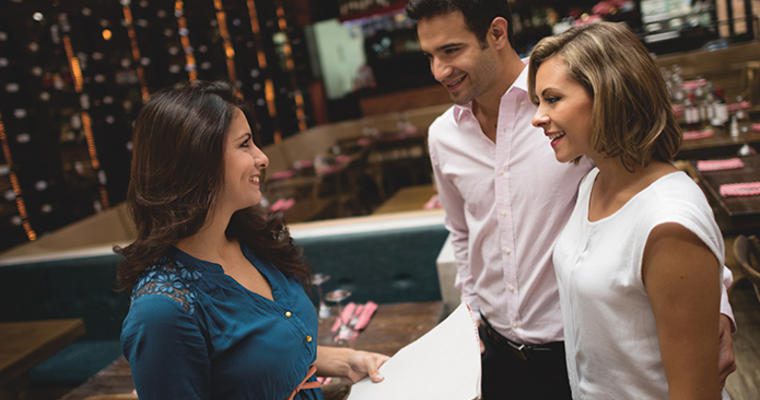It has been a while since I’ve encountered an honest-to-goodness “captain” in an American restaurant. And I’ve never met one in a casual eatery. But I want to make the case for putting someone at the helm of the front of the house. That means a highly qualified, take-charge person who calls the shots and steers your crew around all the obstacles that can get in the way of a quality dining experience.
What’s my reasoning? Well, savvy operators are looking for any point of difference they can establish between themselves and their competition. At the same time, the idea of providing excellent customer service has morphed over time to become the larger notion of providing patrons with a great experience. Consequently, operators are dialing up their expectations of people now occupying traditional restaurant positions.
Wait staff, for example, are now also expected to “sell” menus via precise product, ingredient and cooking knowledge, and to “expedite” food by assuring proper portioning, temperatures and garnishing.
Reinventing the host role
The role of host is also evolving—or perhaps I should say it’s ripe for reinvention. Because many operators are still placing the youngest, prettiest, handsomest, newest, greenest person they have in this key role, with no more training than a vague direction to “watch for open tables and seat the people.”
Big mistake, one with the potential to kill return business. I continue to observe many hosts socializing with their co-workers and many more seemingly unable to divert their attention from their cellphones. They’re certainly not focusing on guests.
In my workshops, I zero in on the host role as one of the greatest opportunities to “dial up.” In addition to being the first and last person a guest encounters, a host should accept the responsibility of controlling the flow and the floor.
Learning from captains
Western culture no longer looks at dining as “fine dining” exclusively. But that doesn’t mean we can’t borrow some ideas that made fine dining the experience it was back in the day.
Travel to Europe or take a cruise and you will encounter a “Restaurant Captain”—a front-of-the-line person who interacts with guests and ensures that every facet of their dining experience is top-notch. The host is the American equivalent of that role in midscale and casual dining, at least in terms of being seen as the establishment’s public face. But few restaurants hold their hosts to the level of performance a true captain delivers. Training your hosts to do more than “put butts in seats” is another opportunity to distinguish your operation from the competition.
How can you transform your hosts into captains? By hiring based on personality, work ethic, attitude, dapper appearance and an ever-present smile. By demanding the best and never compromising. By treating “host” not as an entry-level position but as a stepping stone for an ambitious person you are intending to move into a leadership role.
An operator I greatly admire told me the host is the first person he goes to for a “pulse check” when he visits any of his 15 restaurants. He expects the host to know (and continually be updating) the guest wait, kitchen response time, table turnover rate, what’s selling, who’s having a great night and who isn’t, etc.
Sounds as though he expects his hosts to act more like captains, and the success of his business proves he’s right.
Bottom line: Your guests expect more than just customer service today, so you should expect more from your team.
17 “Captain-Like” host tips
- Be ready to work … look sharp … supplies at the ready… guest-focused.
- Never leave the host stand unattended.
- Eyes on the front door. Stay vigilant to guest signals.
- Greet all guests within seven seconds.
- Know what table is going to open when.
- Kids coming? Give the wait staff a heads-up.
- Keep waiting guests in the loop. Give general wait times, not specific! Rule of thumb: Allow five minutes for every table of the same size that is waiting.
- Prioritize waiting-area seats to seniors and the handicapped.
- Walk backward and talk to guests while taking them to their table.
- Probe for preliminary guest info: “Been here before? Special occasion?”
- Point out a featured item if you’re walking past a table enjoying it.
- Keep track of the evening’s progression.
- Be fair in station and guest assignment to servers; rotate profitable seatings among staff.
- Assign guests to tables on the basis of the largest guest in the party.
- Hand off the menu at the table with slow and gentle courtesy.
- The trip back to the host stand is for observation and double-checking table settings.
- See a server or busser with their hands full? Jump in to help.




























